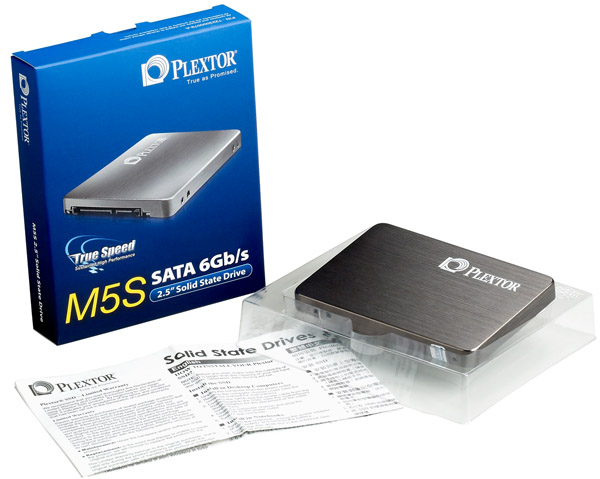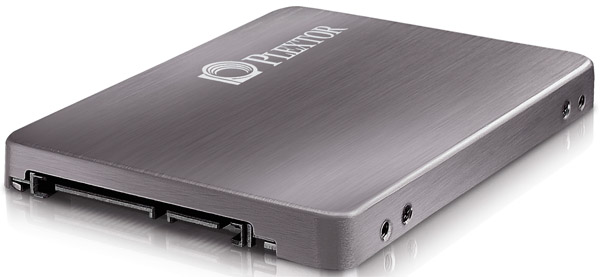Plextor M5S 256 GB Review: Marvell Inside, With A Twist
Plextor's optical drives were always known for their quality. Now, the company is trying to carry that reputation over to SSDs. Its M5S is actually a fourth-generation offering based on Marvell's controller technology. But Plextor adds its own spin, too.
Plextor's Fourth-Generation SSD Family Emerges
If you're old enough, then you probably know Plextor as a purveyor of high-quality optical drives. So, the company's first SSD family (the M1 series) seemed like it came out of left field back in 2010. The M1s were quickly followed by the M2s and M3s, all of which carried on Plextor's tradition of well-rounded, reliable products.
Plextor's next effort launched as the M5 series. Its name seemed misleading, since this was the company's fourth-generation SSD. What happened to the M4? Aside from a conflict with Crucial's already-existing M4 family, the Japanese tend to avoid the number four because it can be pronounced "shi," which sounds similar to the word for death. For that matter, don't expect an M9 series either, as the number nine is pronounced "kyuu" which sounds like the Japanese word for agony or torture.
The fourth-gen M5 comes in two flavors: the M5S and M5 Pro. The M5S is value-oriented. It doesn't come with any accessories or software, and it's only covered by a three-year warranty. The M5 Pro is the performance drive sporting the latest Marvell controller (the 88SS9187). The M5 is faster, complemented by a five-year warranty, and bundled with backup and cloning software, along with a mounting bracket.
Plextor sent over its M5S to start with, and we're taking it for a test drive to evaluate its position versus some of the other popular models in its class.
As can been seen from the table below, the M5S uses the same Marvell processor as the M3 and M3 Pro, and Plextor's 256 GB drives employ a 512 MB DDR memory buffer. The most significant differentiator is that the M5S uses a slower synchronous ONFi-compliant interface, while the other two models utilize Toggle-mode DDR NAND from Toshiba. Despite this, the newer 256 GB drive boasts performance specifications that are faster than the previous generation. We know how Plextor achieved this, and will get into details as we go
| Header Cell - Column 0 | Plextor M5S 256 GB (PX-256M5S) | Plextor M3 256 GB (PX-256 M3) | Plextor M3 Pro 256 GB (PX-256M3 Pro) |
|---|---|---|---|
| Controller | Marvell 88SS9174-BLD2 | Marvell 88SS9174-BLD2 | Marvell 88SS9174-BLD2 |
| DDR RAM Buffer Size | 512 MB (256 x 2) | 512 MB (256 x 2) | 512 MB (256 x 2) |
| NAND | Micron 25 nm Synchronous (29F128G08CFAAB) | 24 nm Toshiba Toggle-mode | 24 nm Toshiba Toggle-mode |
| Formatted Capacity | 238 GiB | 238 GiB | 238 GiB |
| Interface | SATA 6Gb/s | SATA 6Gb/s | SATA 6Gb/s |
| Form Factor | 2.5", 9 mm Z-height | 2.5", 9 mm Z-height | 2.5", 7 mm Z-height |
| Warranty | Three Years | Five Years | Five Years |
| Sequential Read (MB/s) | 520 | 510 | 540 |
| Sequential Write (MB/s) | 390 | 360 | 420 |
| 4 KB Random Read (IOPS) | 73 000 | 70 000 | 75 000 |
| 4 KB Random Write (IOPS) | 70 000 | 65 000 | 68 000 |
Plextor's M5S family includes three drives, and the table below shows us that the performance specs of each model are different. As we might expect, the higher-capacity drives are faster.
In the performance tablet below, numbers in parentheses correspond to the equivalent-capacity models from Plextor's M3 family. Notice that the 64 and 128 GB versions are slower than their predecessors, which is likely the result of a switch to slower Micron NAND.
Get Tom's Hardware's best news and in-depth reviews, straight to your inbox.
| Header Cell - Column 0 | Plextor M5S 64 GB (PX-64M5S) | Plextor M5S 128 GB (PX-128M5S) | Plextor M5S 256 GB (PX-256M5S) |
|---|---|---|---|
| Sequential Read (MB/s) | 520 (520) | 520 (510) | 520 (510) |
| Sequential Write (MB/s) | 90 (175) | 200 (210) | 390 (380) |
| 4 KB Random Read (IOPS) | 61 000 (55 000) | 71 000 (70 000) | 73 000 (70 000) |
| 4 KB Random Write (IOPS) | 25 000 (40 000) | 50 000 (50 000) | 70 000 (65 000) |
The prices on 256 GB SSDs continue falling, and are now under $1/GB in many cases. As they become more affordable, we expect that they'll start replacing 128 GB drives in enthusiast machines. We're focusing on Plextor's 256 GB model as a result of this, and because the lower performance of the smaller drives (particularly in sequential writes) makes them less attractive.
Current page: Plextor's Fourth-Generation SSD Family Emerges
Next Page Inside Plextor's M5S 256 GB-
lutel Why in your reviews you dont mention anything about FDE and its support in modern mainboards based on chipsets for Ivy Bridge? It is much more crucial feature to some people than small differences in performance.Reply -
JackNaylorPE I'd be more worried about matching Mushkin's price / performance ... and same 3 year warranty.Reply
Samsung 230 - $227 ($0.89 / GB)
http://www.newegg.com/Product/Product.aspx?Item=N82E16820147164
Mushkin Chronos Deluxe - $180 ($0.75 / GB)
http://www.newegg.com/Product/Product.aspx?Item=N82E16820226225
-
NuclearShadow Good I hope the market continues to get flooded with SSD's the recent price drops are no doubt hugely influenced by competition.Reply
JackNaylorPEI'd be more worried about matching Mushkin's price / performance ... and same 3 year warranty.Samsung 230 - $227 ($0.89 / GB)http://www.newegg.com/Product/Prod 6820147164Mushkin Chronos Deluxe - $180 ($0.75 / GB)http://www.newegg.com/Product/Prod 6820226225
Hate to break it to you buddy but the Mushkin link leads to a 128GB for $179.99 That is well above $1 per GB. -
blazorthon NuclearShadowGood I hope the market continues to get flooded with SSD's the recent price drops are no doubt hugely influenced by competition. Hate to break it to you buddy but the Mushkin link leads to a 128GB for $179.99 That is well above $1 per GB.Reply
http://www.newegg.com/Product/Product.aspx?Item=N82E16820226237
He gave the wrong link and mistook the Delux for the non-Delux. The above link is the non-Delux 256GB for $179.99. The Delux is another $10 at $190:
http://www.newegg.com/Product/Product.aspx?Item=N82E16820226226
Still, I'd go with the Vertex 4 256GB at $190 instead of any of these at their prices.
http://www.newegg.com/Product/Product.aspx?Item=N82E16820227792&Tpk=Vertex%204%20256GB -
uriah A small inexpensive (25 cent) capacitor could provide enough power to complete writing what remained in the dram if it is a major problem.Reply -
hypermole It would be nice to know if this new ssd is worth more overall than the M3 Pro and why? Warranty?Reply

